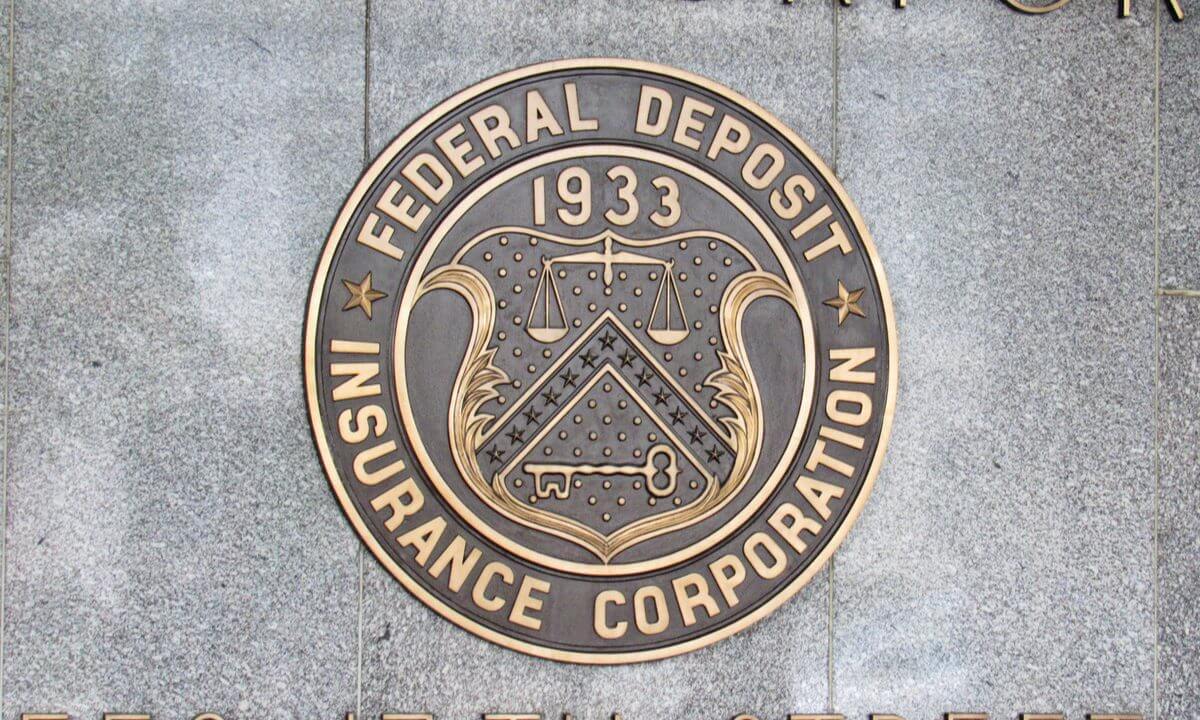Coinbase Alleges FDIC Campaign to Undermine Crypto Services
07.01.2025 13:00 1 min. read Alexander Zdravkov
Paul Grewal, Coinbase's Chief Legal Officer, claims newly unsealed documents expose deliberate efforts by the Federal Deposit Insurance Corporation (FDIC) to obstruct crypto industry activities in the U.S.
Grewal alleges that court-ordered unredactions reveal a coordinated strategy to limit services ranging from basic Bitcoin transactions to stablecoin issuance and blockchain-based payments.
Initially uncovered through Freedom of Information Act (FOIA) requests, the letters suggest the FDIC pressured banks to freeze or restrict crypto services. Grewal has described these efforts as part of “Operation Chokepoint 2.0,” asserting that the agency’s actions extend beyond simple oversight into active suppression of innovation.
Crypto advocate Nic Carter has highlighted the scope of the FDIC’s influence, stating the agency issued at least 25 letters between 2022 and 2023. These communications reportedly discouraged financial institutions from offering Bitcoin and Ethereum services, supporting stablecoins, or engaging with blockchain technology.
The revelations have prompted calls for Congressional hearings to investigate the FDIC’s actions, as critics argue such interference could stifle competition and innovation in the financial sector.
-
1
Here is Why the Fed May Cut Rates Earlier Than Expected, According to Goldman Sachs
08.07.2025 15:00 2 min. read -
2
What Brian Armstrong’s New Stats Reveal About Institutional Crypto Growth
29.06.2025 15:00 2 min. read -
3
Vitalik Buterin Warns Digital ID Projects Could End Pseudonymity
29.06.2025 9:00 2 min. read -
4
Donald Trump Signs “One Big Beautiful Bill”: How It Can Reshape the Crypto Market
05.07.2025 9:56 2 min. read -
5
Market Odds of a U.S. Recession in 2025 Drop in Half Since May
05.07.2025 18:30 2 min. read
BitGo Files Confidentially for IPO With SEC
BitGo Holdings, Inc. has taken a key step toward becoming a publicly traded company by confidentially submitting a draft registration statement on Form S-1 to the U.S. Securities and Exchange Commission (SEC).
Crypto Greed Index Stays Elevated for 9 Days — What it Signals Next?
The crypto market continues to flash bullish signals, with the CMC Fear & Greed Index holding at 67 despite a minor pullback from yesterday.
U.S. Public Pension Giant Boosts Palantir and Strategy Holdings in Q2
According to a report by Barron’s, the Ohio Public Employees Retirement System (OPERS) made notable adjustments to its portfolio in Q2 2025, significantly increasing exposure to Palantir and Strategy while cutting back on Lyft.
Key Crypto Events to Watch in the Next Months
As crypto markets gain momentum heading into the second half of 2025, a series of pivotal regulatory and macroeconomic events are poised to shape sentiment, liquidity, and price action across the space.
-
1
Here is Why the Fed May Cut Rates Earlier Than Expected, According to Goldman Sachs
08.07.2025 15:00 2 min. read -
2
What Brian Armstrong’s New Stats Reveal About Institutional Crypto Growth
29.06.2025 15:00 2 min. read -
3
Vitalik Buterin Warns Digital ID Projects Could End Pseudonymity
29.06.2025 9:00 2 min. read -
4
Donald Trump Signs “One Big Beautiful Bill”: How It Can Reshape the Crypto Market
05.07.2025 9:56 2 min. read -
5
Market Odds of a U.S. Recession in 2025 Drop in Half Since May
05.07.2025 18:30 2 min. read


